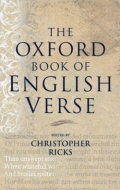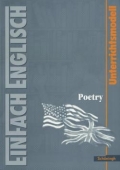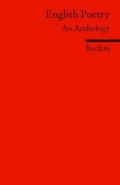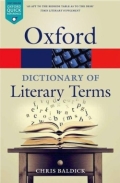Hat man den Auftrag das "Setting" eines Textes zu
analysieren, so geht es darum, zu beschreiben, wo und auch warum eine Handlung
an einem bestimmten Ort stattfindet.
Es gilt also, die Räumlichkeiten oder die örtliche Umgebung (möglicherweise
die Natur) näher zu untersuchen, in denen sich die Charaktere aufhalten.
So kann der Leser z.B. oftmals von den Umständen in der Gegend oder dem
Alter und der Art eines Wohnhauses bzw. der Wohnung Rückschlüsse
auf den jeweiligen sozialen Status ziehen. Ich möchte dies mal mit Hilfe
der Kurzgeschichte "Cheers" erläutern.
Die folgende Geschichte handelt von einer armen Näherin, die für
reichere Leute am anderen Ende der Bahnlinie Näharbeiten verrichtet,
während ihre Kinder im Fernsehen "Queen of the Day" schauen.
Die sehr geschminkte Näherin selbst und ihre Kinder wohnen in einer übelriechenden
Gegend.
Honey ist das kleine Mädchen aus reicheren Verhältnissen, die ihre
Kleidungsstücke abholen kommt.
Cheers
The sewing woman lived across the tracks, down past Arey´s Feed Store.
Row of skinny houses on a mud alley. Her rooms smelled of salted grease and
old newspaper. Behind the ironing board she was thin, scooping up papers that
shuffled open in her hands. Her eyebrows were arched sharp and painted on.
She made cheerleading suits for ten-year-olds. Threading the machine, she
clicked her red nails on the needle and pulled my shirt over my head. In the
other room the kids watched Queen Of The Day. She bent over me. I saw each
eyelash painted black and hard and separate. Honey she said. Turn around this
way. And on the wall there was a postcard of orange trees in Florida. A man
in a straw had reached up with his hand all curled. Beautiful Bounty said
the card in wavy red letters.
I got part of it made up, she said, fitting the red vest. You girls are bout
the same. She pursed her red lips and pinched the cloth together. Tell me
something Honey. How´ d I manage all these kids an no man. On television
there was loud applause for the queen, whose roses were sharp and real. Her
machine buzzed like an animal beside the round clock. She frowned as she pressed
the button with her foot, then furled the red cloth out and pulled me to her.
Her pointed white face was smudged around the eyes I watched the pale strand
of scalp in her hair. There she said.
When I left she tucked the money in her sweater. She had pins between her
teeth and lipstick gone grainy in the cracks of her mouth. I had a red swing
skirt and a bumpy A on my chest. Lord, she said. You do look pretty.
[1979]
Jayne Anne Phillips
Aufgabe: Discuss the functions of the setting in the above
story
At the beginning of the story the reader gets some information about the environment
in which the seamstress lives. These descriptions have different functions:
First of all they serve to structure the story so
that one can imagine in which area both the sewing woman and the little Honey
live. Thus according to the text the seamstress is to be found across the
trail whereas the little girl resides in the town centre.
Secondly atmosphere is created. She herself is described
as standing behind the ironing board doing activities which do not go well
with the ironing board(line 3,4: scooping up papers)
Secondly the descriptions have the function to characterize the
protagonists of the short story. Living behind the trail in
“skinny” houses and on a “mud alley” makes the reader
assume that she lives more likely in a poor and shabby area whereas the little
girl more likely belongs to the middle class. The fact that she speaks a non-standard
English (line 13:”bout”, line 15: “somethin” and line
16 ”an”) reveals her low education.
By mentioning that is smells of “salted grease” and “ old
newspaper” the author Jayne Anne Phillips creates realism.
The reader feels as if he was there and as if he was involved. Additionally
it can be regarded as an indication of the social background.
Already at the end of the first paragraph the reader is allowed to have a
look in the seamstress´ house. She herself is described as standing
behind the ironing board doing activities which do not go well (match, fit)
with the ironing board (line 3,4: scooping up papers). Honey is in her house
and everything is described through her eyes. The second and the third paragraph
take place in her house, too. She has made her face up (line 4/5, line 9 and
line 14/15) and has red nails(line 6), too. In an other room the sewing woman´s
children are watching “Queen of the day”.
In line 10-12 a postcard being on the wall reveals her dreams and wishes.
The postcard showing Florida says “Beautiful Bounty”. Florida
is a symbol of wealth and beauty.
In the third paragraph the reader is pointed to the noise of her sewing machine
which undoubtedly bothers the children watching TV. By mentioning the noise
of the machine the author wants again to create realism and to help the reader
to comprehend the circumstances under which the sewing woman and her children
have to live.
In the fourth and last paragraph Honey leaves the house. Thus the first and
the last paragraph are like a frame inside which there is the sewing woman´s
house with all the occurrences.
Der Text hat also kurz gefasst folgende Funktionen:
a) to structure the story
b) to create atmosphere
c ) to characterize the protagonists
d ) to create realism
>> words to describe the setting of a novel or story
Schulportal www.schule-studium.de
|






